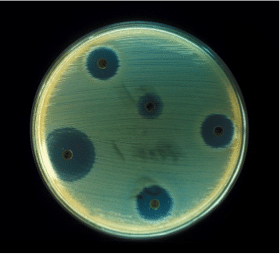Sonication is mostly used during preparation of protein extracts to help break apart the cell. Although most lysis buffers have buckets of detergent that lyse cell membranes, sonication just gives an extra hand in breaking everything apart.
Sonication also breaks up, or shears, DNA in a sample—preventing it from interfering with further sample preparation. Have you ever noticed when you lyse cells that it can be as thick as syrup? Well that’s because of lots of DNA – and sonication will break it apart and make your sample a lot easier to work with.
Here’s 7 tips that I think will help you as you get started using sonication in your sample preps.
Keep your Sonication Samples on Ice
Ultrasound waves transfer energy into your sample, causing turbulence and friction in the liquid. This makes your sample heat up as you sonicate. To prevent your sample heating up too much causing degradation of your precious protein, keep your sample cold. Keep them on ice before and after sonication and preferably during too. Of course it’s a good idea to keep protein samples on ice anyway, so this isn’t too surprising.
Get the Timing Right
This is about finding a balance between sonicating long enough to make sure everything is sufficiently broken apart but not too much so that you heat up your sample and degrade your precious sample. Obviously this is going to be different for different cell/tissue types and also depends on sample volume, so you’ll need to optimize a little. As an example, for a T75 cell culture flask of HeLa’s, I typically use a total of about 2 and a half to 3 minutes of sonication, broken into 30 second chunks.
Pulse!
Many modern sonicators have a pulse mode to reduce heating up of the sample during sonication. Even with an older sonicator, you can simply turn the sonicator on for 5 seconds, then off for 5 seconds. Repeat 6 times for each 30 seconds.
Submerge the Probe to the Right Depth
You need to make sure the probe is submerged to the right depth – if it’s not in deep enough you will get excessive foaming of the sample – if it’s too deep, you won’t get sufficient circulation of the sample. You’ll soon get a feel for this!
Wear Ear Protection
Of course sonication is ultrasonic and out of the range of human hearing, but the collapse of tiny cavitation bubbles created by the sonication creates a loud screeching noise (it’s pretty horrendous sounding). So make sure you wear proper ear protection – sticking your fingers in your ears probably isn’t good enough (although I have seen someone doing this).
Get the Amplitude Right
In general, resist the urge to turn it up and blast your sample – lower amplitude for longer will reduce heating of the sample. On the other hand, you want to make sure everything is sufficiently sonicated and you’ve probably got better things to be doing than sonicating your sample all day long!
Optimize
You’ve probably gathered by now that you’re going to need to spend a little effort optimizing everything for your individual samples. It won’t take long and it will be well worth it!
So that’s it, hopefully following these 7 tips will help you with successful sonication of your samples!






